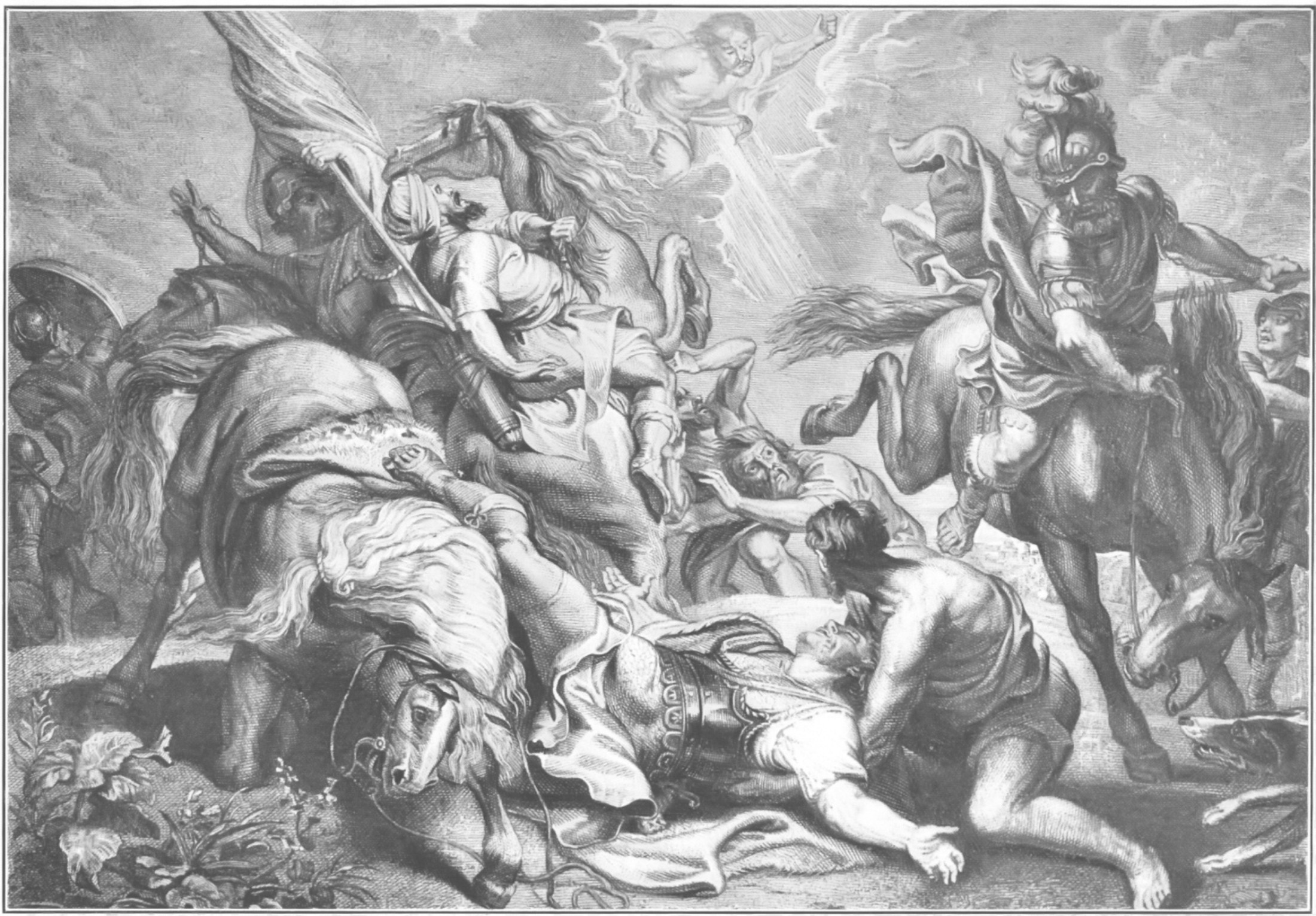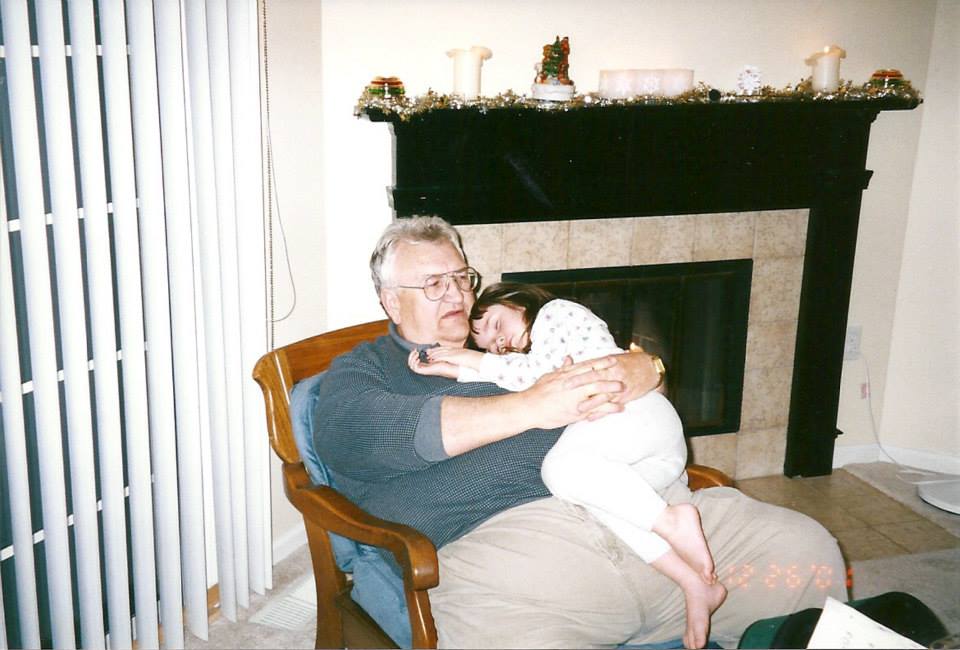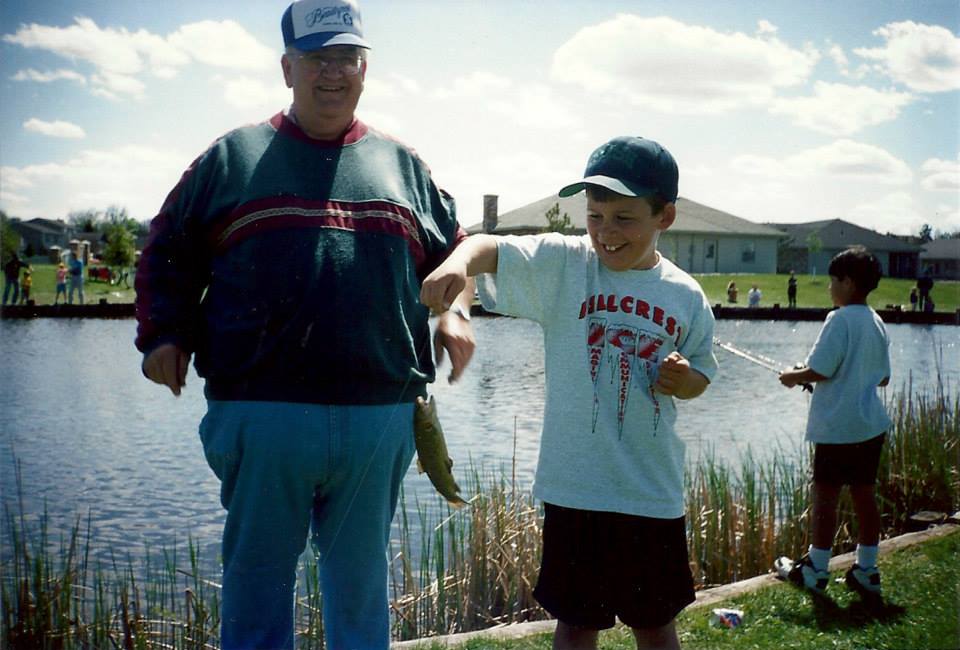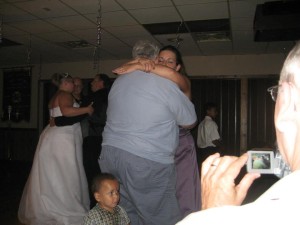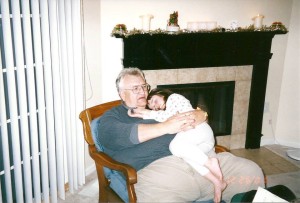Some time ago I was talking to my friend about historical evidences for what the events in the New Testament. One of his biggest challenges was that of the account in Matthew in regards to Christ’s death. In Matthew’s account, he records there was a great earthquake that damaged the temple and that the temple curtain was torn in two. My friends objection was that such a significant event should have some sort of secular, extra-biblical accounts backing it up. So, accepting his challenge I went off and did my research.
What I came across is striking. Of course, there is hardly any physical evidence that would actually entirely prove the entirety of the Bible. Nor can I say that this one piece of evidence completely supports all of the Gospels – that would be jumping to unjustifiable conclusions. Take a look at the evidence for yourself, however. I bolded what is particularly shocking about my research. It is either another huge coincidence – or Biblically accurate – that there was an earthquake that damaged the temple in 33 A.D (the same year we believe Jesus was crucified), is it not?
Below you will find the original text, a leading commentary on the text, and the research it led me to (with that research’s citations).
—–
The text
And behold, the curtain of the temple was torn in two, from top to bottom. And the earth shook, and the rocks were split. 52 The tombs also were opened. And many bodies of the saints who had fallen asleep were raised, 53 and coming out of the tombs after his resurrection they went into the holy city and appeared to many. 54 When the centurion and those who were with him, keeping watch over Jesus, saw the earthquake and what took place, they were filled with awe and said, “Truly this was the Son of God!”
The Holy Bible: English Standard Version (Wheaton: Standard Bible Society, 2001), Mt 27:51–54.
The Commentary
Matthew’s characteristic And look (see on 1:20) makes for a vivid introduction to what follows, as the Evangelist goes on to speak of some unusual happenings that accompanied the death of Jesus. He starts with the temple and speaks of the curtain, which appears to mean the curtain that separated the holy of holies, into which even the priests might not go (except the high priest, and he only one day in the year), from the holy place, into which only the priests might go (most interpreters accept this view, for the meaning is surely that by the death of Jesus the way into the holiest has been opened). Alternatively it might signify the curtain that separated the holy place to which priests had access from the adjoining court to which lay Israelite men were admitted (McNeile favors this view on the grounds that it must have been visible to people in general and not only to the priests; Ridderbos also thinks of this curtain). Either way the thought is of judgment on the temple, and Matthew is indicating that symbolically the way into the holy place was opened by the death of Jesus (cf. Heb. 10:19–20). He emphasizes this truth by saying that the curtain was torn in two from top to bottom, which indicates more than a minor tear. He is speaking of a bisected curtain, a curtain that no longer functioned to keep what lay on the other side of it a secret from all those outside. Religion was never to be the same now that Jesus the Messiah had died for sinners. This phenomenon, Matthew says, was accompanied by an earthquake, the earth being shaken and the rocks split. He leaves his readers in no doubt that what had happened was no minor event, but, in the literal sense of the word, earth-shaking.
Leon Morris, The Gospel According to Matthew, The Pillar New Testament Commentary (Grand Rapids, MI; Leicester, England: W.B. Eerdmans; Inter-Varsity Press, 1992), 724.
The footnote for this commentary reads:
For earthquakes in the Jerusalem area see ISBE, II, pp. 4–5; this article refers to an earthquake that damaged the temple in A.D. 33. In the Talmud we read that the doors of the temple opened by themselves forty years before the destruction of the city (Yoma 39b). Allen cites this passage and others from Josephus and Jerome, and says, “A cleavage in the masonry of the porch, which rent the outer veil and left the Holy Place open to view, would account for the language of the Gospels, of Josephus, and of the Talmud.”
Leon Morris, The Gospel According to Matthew, The Pillar New Testament Commentary (Grand Rapids, MI; Leicester, England: W.B. Eerdmans; Inter-Varsity Press, 1992).
The Encyclopedia (the ISBE mentioned in the above footnote), with Seismology and Geography citations
EARTHQUAKE [Heb ra˓aš; Gk seismós]; AV, NEB, also RUSHING. A shaking of the earth’s crust, usually a tectonic activity of variable intensity. Egypt is relatively free from this hazard, but the area from Greece to Iran is especially vulnerable, as many catastrophes in the area indicate: a quake in Iran in the spring of 1972 took four thousand lives, and two decades earlier Greece suffered severely. Palestine is at the edge of this quake-prone area, the center of which lies in Turkey.
In the past two millennia Palestine has had seventeen recorded quakes of major proportions, an average of slightly less than one in each century. Amos alluded to one in his day (ca 760 B.C.): “two years before the earthquake” (Am. 1:1). Josephus (Ant. xv.5.2) reported the loss of ten thousand lives in a quake in 31 B.C., the effects of which may still be seen in the steps of a cistern constructed by the Qumrân community near the Dead Sea. On Jan. 1, 1837, an earthquake centered in Safat took nearly five thousand lives. Another, centered in Nâblus, resulted in the loss of 350 lives in 1927. The Ludd-Ramla area is also subject to earthquakes.
It is believed that the source of the major quakes is the Jordan or rift-valley. Antioch in Syria has often been an epicenter. Jerusalem is relatively free from severe quakes (though it seems to have been hit more frequently by small ones). A quake in 64 B.C. damaged the temple in Jerusalem, as did another in A.D. 33. This may have coincided with the disturbance mentioned at the time of Jesus’ crucifixion (Mt. 27:54; 28:2).
In addition to the major quakes reported above, seismic activity has been recorded in many places since NT times. A severe quake hit central Palestine in A.D. 130, and in 365 the fortress at Kerak in Transjordan was severely damaged. Severe shocks were experienced at Imwas in 498, at Acco in 502, in Galilee in 551, and at Jerusalem in 746. In 1016 the cupola of the Dome of the Rock in Jerusalem collapsed. The quake in 1033 was very severe and widespread. In 1546 and again in 1834 severe damage was done to the domes of both the Holy Sepulchre and the Dome of the Rock. Earthquakes dammed the Jordan River (as perhaps in the time of Joshua) at Damiya in 1546 and again in 1927; the latter shock left 860 dead.
The number of casualties normally depends not so much on the severity of the quake as on its location; when populated areas are hit, as at Safat in 1837, the loss of life is far more extensive than if the quake occurs in open country. Obviously buildings constructed of earth or stone are much more liable to damage than structures of wood, steel, or reinforced concrete.
The Bible sometimes refers to earthquakes as accompanying divine revelation (Ex. 19:18; 1 K. 19:11f; Isa. 6:4) or demonstrating God’s power (Job 9:6) and presence (Ps. 68:8 [MT 9]) or divine judgments (Ps. 18:7 [MT 8]; Nah. 1:5; Isa. 13:13; 29:6; Am. 9:1; Ezk. 38:19f; cf. Zec. 14:5). An earth tremor sufficed to free Paul and Silas at a very opportune time (Acts 16:26). Earthquakes are predicted to precede the end of the age (Mt. 24:7; Mk. 13:8; Lk. 21:11; Rev. 6:12; 8:5; 11:13, 19; 16:18).
Bibliography.—D. H. K. Amiran, IEJ, 1 (1950/51), 223–246; C. F. Richter, Elementary Seismology (1958); E. J. Arieh, Geological Survey of Israel, 43 (1967), 1–14; Encyclopedia Judaica, VI, sv; D. P. McKenzie, Nature (London), 226 (1970), 237–243.
1) From Last to First: Advice from an Outgoing Seminary Student to Incoming Ones
“Second, understand that there are millions of Christians, many of whom are being persecuted, in other parts of the world who would gladly give much to be able to take these classes and sit under your professors. God in his great providence has allowed you to be here, so take advantage of this opportunity.”
Mmph.
2) What Will Be the Cost to the Church?
“For months now the question has been in front of me. It has been there in the document I open every day, the document that contains a list of articles to write, and questions to explore. “What will be the cost to the church if young men continue to give themselves to pornography?” What do we, as Christians, stand to lose if so many of our young men continue to spend their teens and twenties in the pursuit of pornographic pleasure?”
“He does not criticize or downplay the presence of sexual desire and the longing to find sexual fulfillment. Rather, he admits it, celebrates it, and shows that to direct that energy toward adultery, fornication or pornography is to completely misuse it. His solution is simple: Put your sexual desire to the best use of all. “Rejoice in the wife of your youth…be intoxicated always in her love.” Donald Spence-Jones interprets this way: ‘The teacher, by a bold figure, describes the entire fascination which the husband is to allow the wife to exercise over him.'”
This is a great follow-up to article 2.
3) Ligon Duncan is New Chancellor at RTS
“The RTS Board of Trustees has elected Dr. J. Ligon Duncan, III, as chancellor and CEO of Reformed Theological Seminary. Duncan is currently the John E. Richards professor of systematic and historical theology at RTS in Jackson, Miss., and the senior minister of historic First Presbyterian Church (1837), where he has served for the past 17 years. He is the president of the Council on Biblical Manhood and Womanhood, and served as President of the Alliance of Confessing Evangelicals from 2004-2012. Click here to visit the RTS chancellor Web page.”
As a current RTS student, this causes me to be super excited.
4) Why You Can Trust Your Bible
“It’s common to see the argument that the Scriptures we have today aren’t the same as what was written by the apostles in the first century. Such arguments attempt to portray the Bible as unreliable and therefore irrelevant. As we will see, however, these challenges do not stand up to scrutiny.”
This article might be better titled “Why You Can Trust Your New Testament”, but it is still a good article none the less.
5) Cigar Smoke and Mirrors and Transformation
“Surely it is time to become realistic. It is time to drop the cultural elitism that poses as significant Christian transformation of culture but only really panders to nothing more than middle class tastes and hobbies. It is time to look again at the New Testament’s teaching on the church as a sojourning people where here we have no lasting home. The psalms of lament teach us that it is only when we have realistic horizons of expectation will we be able to stand firm against what is coming. If we do not understand that now, we are going to be sorely disappointed in the near future.”
6) Five Commitments to Those Struggling with Same-Sex Attraction in our Midst
“One of the difficult things–among many difficult things–related to homosexuality is how to speak of the issue in a way that addresses all the nuances people need to hear. As I’ve written before, there are various groups that may be listening when we speak about homosexuality, and the group we think we are addressing usually dictates how we speak. There is time for toughness and a time for tears, a time for defense and a time for letting down our defenses, a time for rallying the troops and a time for putting up our hands to show that we come in peace.”
Good tips here.
7) Ex-Mormon Shares Secrets from the LDS
“I began to feel like somebody was pulling back the curtain in Oz..”
As I’ve discussed before, this story has all the signs of a good cult.
8) School has Become Too Hostile for Boys
Time reports that in the name of zero-tolerance, boys are struggling. I’d argue this has to do with the general feminization of our culture, as well.
Watch this video. Just…do it.
As I was cleaning out some old documents for my move (I get married in 19 days!), I stumbled across a copy of the eulogy I wrote for my grandpas funeral in 2008. This month marks the five year anniversary of his death. It is difficult to believe he has been gone that long.
Some of my family members have asked me for a copy of this document in the past. I am mainly posting this online now so they have it as a source to go back to, or if they wish to save it as their own document.
And I heard a loud voice from the throne saying, “Behold, the dwelling place of God is with man. He will dwell with them, and they will be his people, and God himself will be with them as their God.4 He will wipe away every tear from their eyes, and death shall be no more, neither shall there be mourning, nor crying, nor pain anymore, for the former things have passed away.”
5 And he who was seated on the throne said, “Behold, I am making all things new.” Also he said, “Write this down, for these words are trustworthy and true.” – Revelation 21:3-5
—–
 For those of you who don’t know me, my name is Ben and I am one of many grand-kids sitting in this room today. My grandfather was such a great man, that I don’t know if anything I can say will put his memory to justice, but I will try. I know exactly what Grandpa would be saying right now if he was here. “What the heck are you doing up there on that podium? I don’t deserve all this!” The fact of that matter is that no one I’ve ever met in my life deserves remembrance more.
For those of you who don’t know me, my name is Ben and I am one of many grand-kids sitting in this room today. My grandfather was such a great man, that I don’t know if anything I can say will put his memory to justice, but I will try. I know exactly what Grandpa would be saying right now if he was here. “What the heck are you doing up there on that podium? I don’t deserve all this!” The fact of that matter is that no one I’ve ever met in my life deserves remembrance more.
Grandpa was a simple man. He wasn’t worried about economics, and he didn’t sweat politics. In fact, eating potato salad that was made by anyone other than my Aunt Trudi was more of a crisis to him than ANYTHING else that could be going on. He would, of course, eat all of it – but he would let you know how he felt about it with each passing bite. He was only worried about the finer things in life we all take for granted – quality time spent with friends and family and the love we share with one another. I remember all of my phone conversations with him going about the same – first I found out what the weather pattern in South Dakota has been like, and then heard about how great Uncle Troy was doing on his current job. I don’t know if anything made him more proud.
I’ve been doing a lot of thinking lately about what it means to leave behind a legacy. As I said before, Grandpa was a very simply man. He did not have many possessions, and he did not have a lot of wealth. But one thing I think we often forget is that wealth is not measured by the money in our pockets, but rather by the love we have in our hearts. By this standard of measure, I think Grandpa was the richest man in the world.
One of my favorite memories with Grandpa is our many strolls through town. With his one arm out the window and a grin on his face, we would make our way to the Dairy Queen to get a Blizzard. I’m sure as many of my family members can attest to, Grandpa had a massive sweet tooth. My favorite quote from his has always been “There’s always room for ice cream, because it fills in the cracks!” I couldn’t count how many times I heard that one.
He may have been simple, but he sure did know how to make a statement when he needed to. I remember once when I was young and were at a Denny’s down in Kansas. Grandpa ordered a tall glass of milk and the waitress thought it would be a good idea to bring it to him before his meal came – that was a mistake. “Why would you bring this out before the meal? Now it’s going to get warm.” If I remember correctly, I think we left the restaurant because of that incident. He was a man very set in his ways.
Where any other man would’ve been annoyed by the actions of his grand-kids, our grandfather couldn’t help but smile. I know I speak for all of the grand-kids when I say one of our fondest memories as kids involved one recliner, a few rolls of masking tape, and one loving Grandpa. Sometimes up to a dozen of us would race into the living room, steal his infamous crossword puzzles out of his hands, and then we would climb up on his lap and waste rolls of masking tape, binding him down to whatever we could find while Grandma just stood there laughing. Of course afterwards, all dozen of us would spend the rest of the evening passed out on his lap – somehow we all fit.
We all have our own great memories of Grandpa. For some of us, it may be the few times we spent in Grandpa’s bus as we eagerly awaited lighting off fireworks on the fourth of July. For my cousin Josh, he loves his countless memories shooting rifles out in the country with Grandpa, who bought him his first two rifles at a very young age. Grandpa loved nothing more than taking those rifles out and firing hundreds of shells at nothing but empty cans, especially with his grandchildren.
And then of course there is my little cousin Sierra, who in the last 10 years has created enough memories with Grandpa to last a life time. If there were ever two people who were truly attached at the hip, it was those two. Sierra, you should know that Grandpa was very, very proud of you and the countless memories you have of him are something that no one can ever take away.
For me, today is not a day of mourning. Today is a celebration of the life of a great man. If he were here right now, he would not want a frown on any of our faces. When I think of him smiling, or his belly rolling with laughter because I just sneezed Diet Pepsi all over his new pickup truck, I know I can’t help but smile. And that is what he would want from all of us today.
As I was saying, I’ve been thinking a lot about what it means to have a legacy. At first glance, would would say the 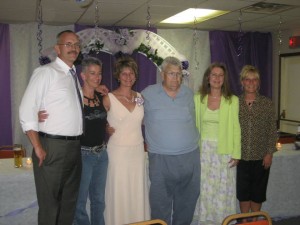 countless buildings, homes and renovations he has done throughout the year would be Grandpa’s legacy. But I think it is much more than that. I think it is also the countless peoples lives he has touched while doing all of these projects. I think it is the unending, selfless love that he has shown for his friends and family through the years. I think it is the five wonderful children he has raised, often sacrificing his own well being for the benefit of his family. So maybe we can learn a lesson from Papa and his ice cream, because just like we can always make more room for a frozen treat, we can always make more room for more love in our hearts.
countless buildings, homes and renovations he has done throughout the year would be Grandpa’s legacy. But I think it is much more than that. I think it is also the countless peoples lives he has touched while doing all of these projects. I think it is the unending, selfless love that he has shown for his friends and family through the years. I think it is the five wonderful children he has raised, often sacrificing his own well being for the benefit of his family. So maybe we can learn a lesson from Papa and his ice cream, because just like we can always make more room for a frozen treat, we can always make more room for more love in our hearts.
Hello Readers,
First of all, what an amazing Easter this has been. He has risen – He has risen indeed! I was encouraged today not only by the great gospel message from our pastor, but my church also had four testimonies and baptisms. Nothing quite tugs my heart strings as much as seeing lives completely turned around and changed by the gospel and witnessing that celebrated.
A quick update from my end. I have been completely overwhelmed (in some good ways, some bad ways) by the response of “Bacon, Jesus and the New Covenant”. This blog was started as a means to share some things with family and friends, yet over two days the post not only went global but reached over 420 likes on Facebook (as well as my first set of commenters to deal with) and has been read in over 10 countries. I am at the same time bewildered and humbled.
The next set of posts probably won’t be as engaging nor controversial as the “Bacon” post (although, seeing as how that post was unplanned, there may be another such post in the near future). I will be beginning a three part series this week on the importance of language studies, tentatively followed by a two part series on the pursuit of holiness and what that looks like for a Christian.
I am going to be attending The Gospel Coalition conference in Orlando next week, so expect some updates and thoughts from that woven in as well.
I am very grateful for all of you who have taken the time so far to read through this blog that is still in it’s infant stages. May God be glorified through the posts and discussions that take place here.
For the King!
-Ben
